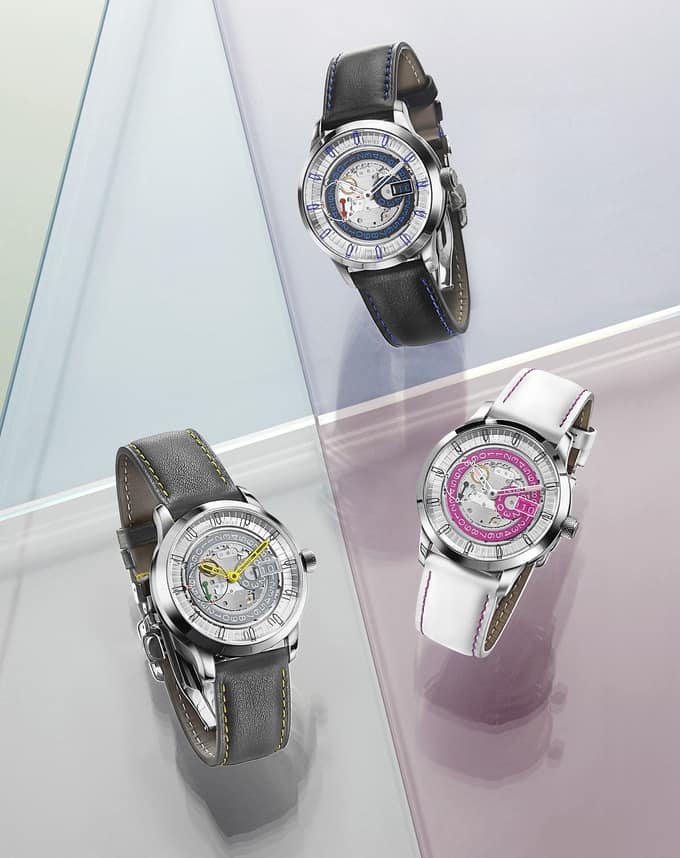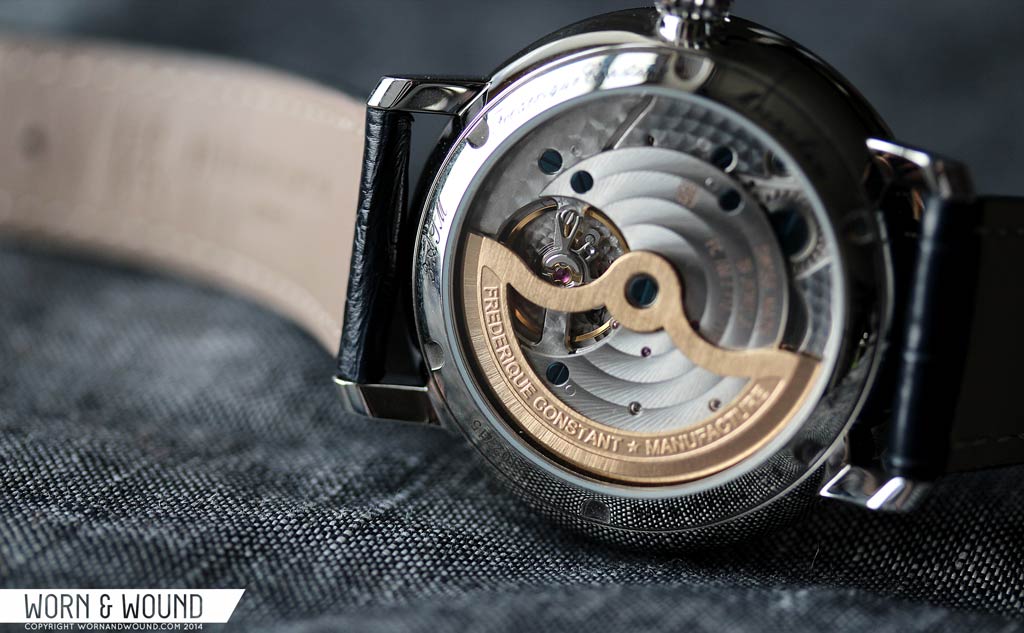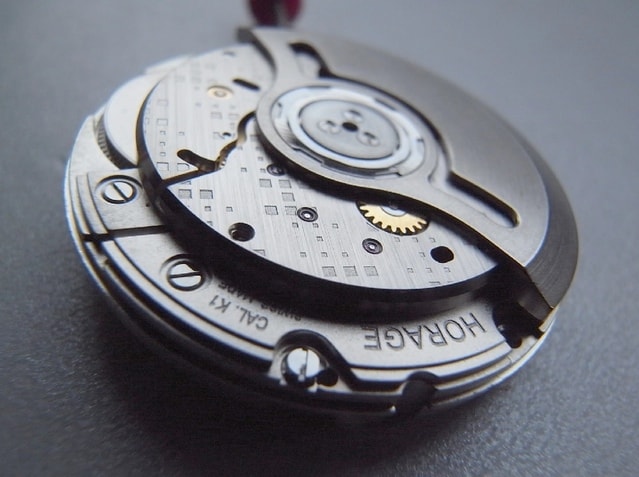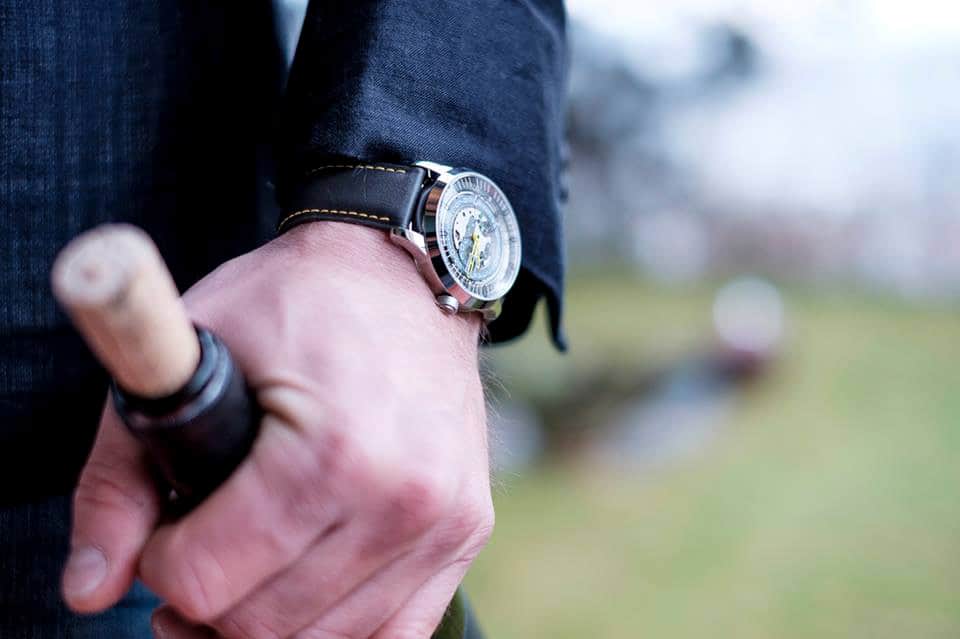I’m going to start this article by saying that what I’m about to try to cover is an incredibly ambitious project 7 years in the making. A project that is inspiring, exciting, but dense and a bit hard to decipher at first glance. In fact, it was only after discussing the project and the companies involved at some length over Skype with one of the founders, Andreas Felsi, that I realized what this really was… and how epic it really is. Because while in the end of the day, there is a Kickstarter campaign focused around a couple of quirky watches, what this is really about is a new 100% independent movement manufacturer, one that will hopefully become a major player. So, I’m going to try to break it down for you as best I can, which will hopefully illuminate what is a pretty fascinating story and a really fascinating movement. I should also start by saying that while this was “news” to me, this story is in fact something that has been covered previously by the industry magazine Europa Star in 2013. Much has changed since then, but some of the background and some technical details can be found there.
“I told you, there’s a lot in common between a kick in the ass on the field and a kick in the ass of an old industry” – Jonas Nydegger
Background
It’s no secret at this point that in 2002, Nicholas Hayek announced that ETA, a Swatch group brand, would be weaning the rest of the industry off of ETA movements. A very controversial move that lead to various law suits, quite a bit of anger and the potential demise of many a brand. Hayek’s goal was supposedly in part to stimulate more creativity within the watch industry (imagine what he would have thought of Kickstarter), and force more brands to invest in manufacturing their own movements. People who agree with this move liken ETA’s role, previously, to what if a single car brand made all the engines for their competitors? Would that not seem crazy? And while yes it would, the reality is that ETA was more like the sole spark plug maker. Imagine if only one brand made a crucial component for all motors, and then suddenly stopped making it? Would it be fair to leave everyone else to start from scratch? Brands that relied on that part for decades? More over, what if that spark plug brand was founded by an industry during a financial crisis, with the intent of saving the industry by consolidating? Well, that’s basically what happened during the quartz crisis with many Swiss brands dropping their manufacturing capabilities to support Swatch.
Whether or not Hayek’s plan has worked is still to be determined, especially in terms of whether or not Swatch group has truly gained a competitive advantage, but there certainly has been an effect. Would Selitta have become a major provider? Would a brand like Nomos have invested in manufacturing their own escapement? Would Christopher Ward, Frederique Constant, Oris, Damasko and Habring2 ever have tried making their own movements? Would Tag Heuer ever have worked with Seiko? Would we be seeing the amount of Miyota and Seiko powered watches had this not happened?
Why this is relevant, is that it serves as the starting point for Horage and Accurat Swiss, the brands that this article is really about. 7+ years ago Andreas Felsi and Tzuyu Huang, the CEO of Swiss watch parts supplier named Momoplus AG based in Biel, decided they wanted to make watches themselves, thus creating Horage. Momoplus makes everything from cases to dials, but not movements. They quickly were met with the reality that ETA movements would not be available to them; they simply were too late. So, they debated going high-end, and pursued haute movements from Vaucher, the movement manufacture arm of Parmigiani Fleurier. That brand was more or less bought up by Hermés, which threw a wrench into the whole thing. That’s when they had their eureka moment; that they should make their own movements.
The K1 Caliber
This is where things get really interesting. The irony in ETA supposedly encouraging brands to make their own movements, is that the investment is incredibly high, and the expertise needed is even higher. So, it’s not exactly something that your average start-up can undertake. Heck, it’s not something many seasoned watch brands can undertake. But in this case, because the founders are industry insiders, they had the expertise or knew where to find it.
Amazingly, instead of becoming another high-end haute independent, their concept quickly became about industrialization. They were looking at the Swiss watch industry and saw that there are very few brands capable of manufacturing at scale, especially truly independent ones, and fewer still that provide for the industry. Designing for scale is a whole different challenge, but also allows for some real innovation, should a brand be willing. While movements like Selitta are mass produced and available for purchase (though they are back ordered and supposedly not very welcoming to new customers) they are clones. This gave Selitta a quick advantage early on, as they could be swapped in for 2824s, but in the scheme of things, they made little to no improvements on an existing design that dates back to the 70’s.
Why make something new only to remake something old? So, they created a new movement manufacture brand later named Accurat Swiss, and began to design something different and refreshing, the K1 (named after the notorious Karakorum mountain range, a symbol of the challenges they faced) while not redesigning the wheel. The first major hurdle they wanted to get over with their design was that of variation. Why make a single movement with a single layout, thus stifling creativity? The solution is the concept of modularity, an approach that their engineer Stephan Kussmaul had previously introduced to Eterna, when he worked on the Caliber 39. You might be saying, well “modules” are nothing new, which is true, but this approach is. The problem with existing modules, think of the common 2892/Dubois Depraz chronograph, is that they get tall quickly, and the crown is often displaced.
Their idea is this, they make a base movement that can have functions added to it via modules, that don’t increase the height. In fact, they maintain a relatively slim 4.95mm, making it a touch thicker than 2824s. But, when a brand purchases the movements, rather than ordering 100 of this type, and 100 of that type, etc, a brand simply purchases 200 K1’s and can install the modules themselves during the assembly of the watch. The crazy part, is that the base movement is regulated, and doesn’t need to be re-regulated when the module is installed. The practicality behind this is that it allows a brand to design a wider variety of watches, but also to supply based on demand, as well as easy assembly. If the 3-hand version sells more than the 2-hand with big date, they aren’t left with a batch of unused movements. This also makes manufacturing more efficient, as they only have to produce one type of movement, thus parts are standard.
For the K1, they went with a range of complications, leading to 18 variations, all the same thickness. The complications are 9 o’clock small seconds, big date, regular date and power reserve. The variations are illustrated below:
The innovations don’t stop there, in fact what’s lurking within will truly surprise. Earlier, when I mentioned spark plugs, I was referring to escapements. Arguably the most complicated part of a watch to produce (save specific complications), it includes minuscule components manufactured with exacting tolerances such as the hairspring, balance, escape wheel, pallet, etc… This alone has kept many brands dependent on ETA as manufacturing their own is simply beyond scope. Notably, Nomos invested 12 million Euros to create their own escapement manufactured in Germany. So how is a bootstrapped upstart supposed to create their own?
Once again, they took a modern approach, and realized that the future was in silicon, so they teamed up with Bosch, an industry leader in silicon sensors, to develop key components. In the end the escapement features silicon, coated with mono-crystalline nano diamonds, escape wheel and palette, which has no pallet stones, as well as a silicon hairspring; hairsprings being the hardest part of all. There are obvious non-magnetic advantages to using silicon, but it also reduces drag/friction increasing efficiency by 30% (their numbers). This makes the K1 a much more modern movement, one with potentially much longer service intervals.
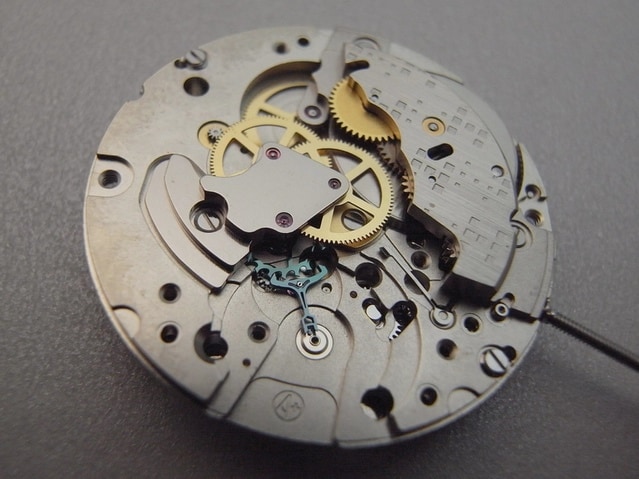
Other details on the K1 include that it has a 56 hour power reserve, a uni-directional solid Tungsten rotor, 25 jewels and a frequency of 3,5 Hz / 7 beats per second or 25,200 bph. This latter detail is a bit odd as we typically see 21,600 or 28,800 bph, this being in between. This was a conscious engineering decision on their part for accuracy, though the technical reasoning is beyond me.
The important thing to keep in mind is that this isn’t a hand-made movement that they plan on making 50 of in a year and charging thousands or tens of thousands of dollars for. No, this movement was designed and engineered to be mass produced via CNC machining in the tens to hundreds of thousands of units and available at a reasonable price. If they are able through new investment to increase their output capacity, they have a goal of $250/movement. This makes it comparable to the cost of a chronograph, for example, so you’d find it in watches that will start around $2k. That said, for a 100% independent, all Swiss and German parts movement with a silicon escapement, that price is very low.
In a WatchUSeek post, founder Andreas illuminated the difficulty in achieving what they have, as well as some of their lucky breaks, which for me makes the end product all the more interesting; it’s a real passion project. There hasn’t been a clean line from A to Z, and the whole project was quite clandestine for long periods. Essentially, the movement was designed and developed slowly first under their own roof at Momoplus AG by Stephan Kussmaul. They picked up Jonas Nydegger, a watch maker, industrialization expert and star of their Kickstarter (more on that below) also from the Eterna ranks who continued to drive the project. Because of their brief work with Vaucher, they became friendly with the CEO and former ETA engineer Florian Serex, who consulted throughout and is now a team member, bringing some serious industry cred along with him. He also connected them with Claude Greisler, the technical director of Armin Strom, who allowed them to get access to the AS workshop. They then befriended Thilo Mühle of Mühle Glashütte who also has provided support, seeing the brand as potential movement provider.
Of course, difficulty has come in the form of financing, with investors coming and going, resulting in team members leaving, the brand being dissolved once, then reestablished. It’s only been through the perseverance of a few core members that they were able to reach the product they have today, which is the third iteration of the K1. The coolest part is that these movements are ready to be made; they aren’t prototypes or concepts. In fact, they have been made and are in watches that are for sale. They only need more financing to grow the scale of their manufacturing.
For more technical information, check out the Q and A with Stephan Kussmaul in Europa Star
for general details check out their kickstarter update
Horage and Kickstarter
When they first created Horage, they enlisted seasoned watch designer Julia Hou (Patek, Tissot, Ebel…) to work on the project. She has remained a team member throughout and provides their design support. If you head to horage.com you’ll find a line of very clean, classic watches she designed, some of which that utilize the K1 movement. Prices range from 2,900 CHF to 14,900 CHF for gold versions. One watch of particularly note is the 39mm all titanium Autark. The design has a distinct Genta vibe, and features a version of the K1 with sub-seconds, big date and power reserve. It’s available today, for 3,900 CHF or around $4,200. But if you head to their Kickstarter campaign, you’ll find something very different.
Their Kickstarter project is a bit confusing and perhaps doesn’t correctly highlight what is going on, but it nevertheless is in support of Horage, Accurat Swiss and the K1 movement. It’s start with a video showing team member Jonas Nydegger, who is also an avid rugby player, in full rugby attire comparing the sport with watchmaking. The film humorously cuts between Jonas on the field backed by distorted guitars, to Jonas at a watch maker’s bench, with light classical piano, and narration that flows between the two. For example, he makes the obvious point that on the field team work is key, and in a movement, all parts have to work in harmony or the whole fails. He goes on to explain a bit about the movement, namely that it is their own design and has a silicon escapement, as well as the watch that they are selling through KS, the JONAS K1.
The JONAS K1 is a limited edition watch designed to show off their in-house movement. In fact, as the story goes, the inspiration for the design came from Jonas Nydegger testing the movement out by wearing one in a case with no dial or anything else. So, Julia Hou designed three “dial-less” watches that utilizes printing directly on the sapphire crystal create something quite unique looking that puts an emphasis on the mechanism inside. What get’s confusing is the branding… The watch is not an Horage, but rather is branded with the movement company’s name, Accurat Swiss… but says it’s powered by Horage. So, the watch is made by the movement brand but is powered by the watch brand that uses the movements… You can see the confusion, but I think what is going on is that the JONAS K1 is sort of an independent series that doesn’t really fit with the Horage aesthetic, though it’s being made by them. It’s all one company in the end.
For the JONAS K1, they went with the K1-15 which features a 9 o’clock sub-seconds and a big date. The watch itself comes in at 39mm and is available in 3 color ways, blue, yellow and pink. It’s a bizarre, but appealing design that is tricky to process at first glance. What you are seeing is the movement, with a fully exposed date wheel, movement holder, etc. The index of lines and fence post markings as well as the sub-seconds register is printed on to the sapphire (a process they say is quite tricky). As the movement itself is colorless, the color variations come from the ¢hands, the hour markers and, most significantly, the date wheels. As someone who gives a lot of scrutiny to date wheels, I have to applaud them for using them so creatively (even if bright pink and white is a bit jarring), and demonstrating that they can be customized in production.
Naturally, through the sapphire caseback, you can see the K1 inside. The tungsten rotor has an interesting series of criss-crossing lines which they refer to as a Widmannstätten design. Typically, “skeleton” designs don’t appeal to me as they tend to be garish, but this “open” design is cool in a modern, sporty way. It’s not really a skeleton, as the movement hasn’t been cut through, and the emphasis is less on being ornate than on being raw. Also, at a surprisingly modest 39mm, the watch as a whole will come off understated. The “yellow” model in particular, with its soft gray date and green seconds hand appeals to me. Another unique element to the watch is actually the deployment buckle, which is a patent pending folding style with leaf spring. They don’t go into much detail, but it appears to open from one side and apparently “defeats every single test the Swiss watch industry could think of”.
Through their Kickstarter campaign, Horage/Accurat Swiss are seeking to raise £100,000 or about $155k. Clearly, this isn’t what is needed to to finance 100,000 movements, but rather is for the JONAS K1 and to help support their ongoing project. Limited quantities of the watches will be available at a price of £990 or about $1,500, which is slightly over a %50 savings on the price after KS of £2,000. At $1,500 it’s quite a deal for something with an utterly unique movement that might very well become a collectible, should the brand and movements take off. Their campaign has actually been up and running for quite a bit, and they’ve already brought in over $100k, but they are still a bit short of their goal. If ever there was a KS for a watch worth supporting, it’s this. Though admittedly the price is a commitment.
Conclusion/Summary
So, in a nutshell, Horage and Accurat Swiss have secretly been developing for 7 years a mass produceable movement with a modular construction and silicon escapement meant as an alternative to ETA, Selitta, etc… It’s 100% Swiss, German and independent, and has an anticipated price tag of $250/unit. The people behind it are industry insiders with vast amounts of experience and expertise. They currently are running a Kickstarter for a strange, but cool series of watches that utilize their movement, the K1, the profits from which will go towards supporting their project. It’s all quite impressive, even more so that somehow we hadn’t heard about it before their KS campaign.
The industry needs companies like Accurat Swiss who are innovating on mechanical movements for mass production. The mechanical movements we currently find most often in our watches are based on concepts from the mid-twentieth century, or earlier. When you find movements with more modern designs, like the new Tudor MT5621’s, they aren’t available for sale to third party brands. Accurat’s approach in designing the K1 takes into account variation, production, assembly, while also utilizing modern materials that will prolong the movements’ life. It’s a forward move in an anachronistic industry, that will make for better and more diverse watches that we all can enjoy. Sure, the price per movement is much higher than a Miyota, Seiko, etc… but they are offering something different for watches that, as far as the industry is concerned, are still affordable. Now, they just need a chronograph.
Be sure to check out:
Accurat Swiss
Horage









 Featured Videos
Featured Videos





